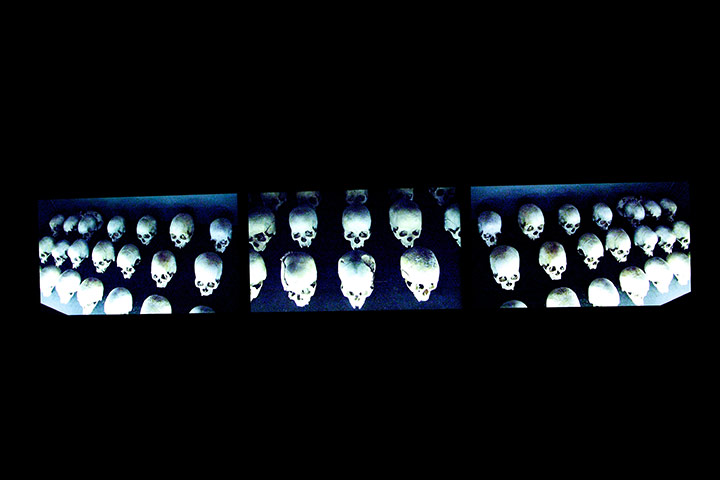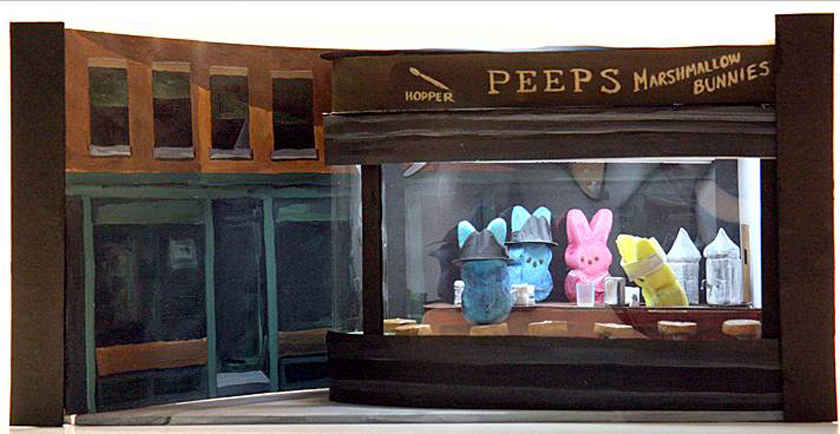I just finished Twin Peaks last night. I am very glad I watched this early 90’s soup opera murder mystery directed by David Lynch. Despite being canceled after two seasons, it gathered a large cult following, and I can see why. It was ahead of its time for featuring complex idiosyncratic characters like Agent Dale Cooper, pretty impressive set designs and just over all stunning cinematography. So I decided I wanted to know more about director David Lynch. Well it turns out my timing could not have been more perfect as the Pennsylvania Academy is hosting a retrospective of his work titled “David Lynch: The Unified Field,” starting Sept. 13. I was, as you can imagine very excited to discover that Lynch was a trained and skilled visual artist as will as phenomenal director. I don’t think its too much to suppose that his background in art making facilitated in part his success as a film and tv show director.
Here is an article about the exhibition I encourage you to read: http://www.nytimes.com/2014/08/31/arts/design/museum-show-for-david-lynch-who-began-as-a-visual-artist.html?ref=design&_r=0
My favorite part of this article is this quote from executive director of the Drawing Center in New York Brett Littman, “He’s not James Franco.” Mr. Littman, who curated a smaller show of Lynch’s photographs and works on paper, is referring to the art world’s collective hesitation in embracing Lynch’s work. Often art administrators become suspicious of actors and musicians claiming they are artists also. But thankfully Robert Cozzolino, the senior curator of the Pennsylvania Academy, saw fit to gather five decades worth of paintings and drawings form Lynch and organize this retrospective.
Lynch’s paintings fascinated me. As a collection they are dark, atmospheric renderings that feature ambiguous images on richly worked surfaces. He gives them names like “Rat Meat Bird” and “Nothing Is Making Any Sense For Instance Why Is That Boy Bleeding From The Mouth” that cause me to reflect on visceral and bodily topics reminding me how venerable my body is to injury. Some of the paintings even look much like open wounds. He also has a series of drawings titled “Bunch” featuring thick black marks of abstract design on tan colored paper. Some of the imagery contained in this series are skulls, bones, simplified architecture, and graphic markings.
Lynch claims there is no logic to his paintings saying that,”What I’m trying to do with each canvas is create a situation in which the paint can be itself, which means letting go of any rationalization. It’s important to let ideas blossom without too much judging or interference…Your intellect can hold back so many wonderful, fantastic things. Without logic or reason, there’s always something else, something unseen.”
I found Lynch’s website and it turns out that Lynch makes his designs furniture and many of the props for the sets of his shows, composes soundscapes, and writes song lyrics. Lynch is truly a man of many talents and if you’re lucky enough to be near the Pennsylvania Academy you need to check out his retrospective.
As for me, I am going to have to start watching more of his movies on Netflix!
Oh, here’s the link to his website: http://www.thecityofabsurdity.com

The Celebration of the Cameleon

Blind Man’s Experiment

Dr. Howl’s Philosophy

Rat Meat Bird

Dog And Child Near My House

Wounded Man as a Tree Creating Bugs

Bunch 3

Bunch 8

A Flea Holds It’s Head High

Billy Finds A Book of Riddles

Cardboard S






















































 The exhibit was designed to promote the idea that
The exhibit was designed to promote the idea that